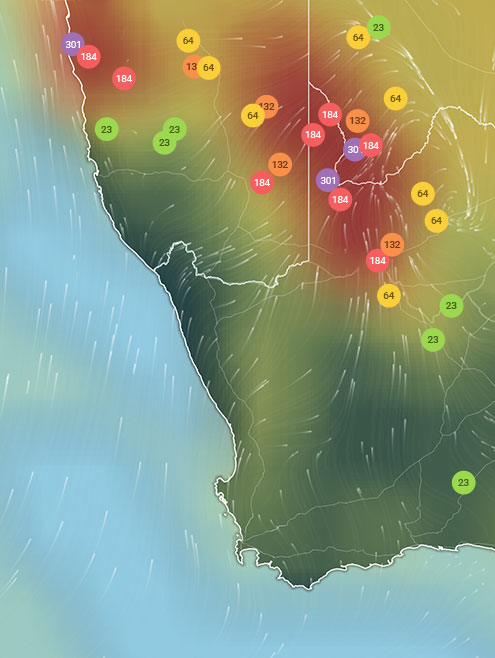获取您自己的监测仪,亲自测量您城市的空气吧。
1M 人关注这个城市






空气质量数据提供者
了解数据提供者和数据来源| 天气 | 少云 |
| 温度 | 71.6°F |
| 湿度 | 23% |
| 风速和风向 | 4.6 mp/h |
| 气压 | 30 Hg |

美国 AQI
102
实时空气质量指数(AQI)
对敏感人群不健康
| 空气污染等级 | 空气质量指数(AQI) | 主要污染物 |
|---|---|---|
| 对敏感人群不健康 | 102 美国 AQI | PM2.5 |
| 污染物 | 浓度 | |
|---|---|---|
| PM2.5 | 36µg/m³ | |
PM2.5
x7.2
德黑兰当前的PM2.5浓度是WHO空气质量年平均指导值的7.2倍
| 减少室外运动 | |
| 请关窗以防止室外脏空气进入室内 了解空气质量监测仪 | |
| 敏感人群外出时请戴口罩 来一个高效又舒适的口罩 | |
| 请开启空气净化器 想要一台空气净化器吗? |
| 天 | 污染等级 | 天气 | 温度 | 风速和风向 |
|---|---|---|---|---|
| 星期一, 4月 22 | 中等 60 美国AQI | 77° 59° | ||
| 星期二, 4月 23 | 中等 52 美国AQI | 62.6° 55.4° | ||
| 星期三, 4月 24 | 对敏感人群不健康 105 美国AQI | 66.2° 53.6° | ||
| 今天 | 对敏感人群不健康 102 美国AQI | 71.6° 57.2° | ||
| 星期五, 4月 26 | 中等 62 美国AQI | 75.2° 60.8° | ||
| 星期六, 4月 27 | 中等 62 美国AQI | 73.4° 62.6° | ||
| 星期日, 4月 28 | 中等 62 美国AQI | 75.2° 62.6° | ||
| 星期一, 4月 29 | 中等 59 美国AQI | 80.6° 66.2° | ||
| 星期二, 4月 30 | 中等 57 美国AQI | 77° 68° | ||
| 星期三, 5月 1 | 中等 58 美国AQI | 75.2° 68° |
想了解每小时预报吗? 下载App